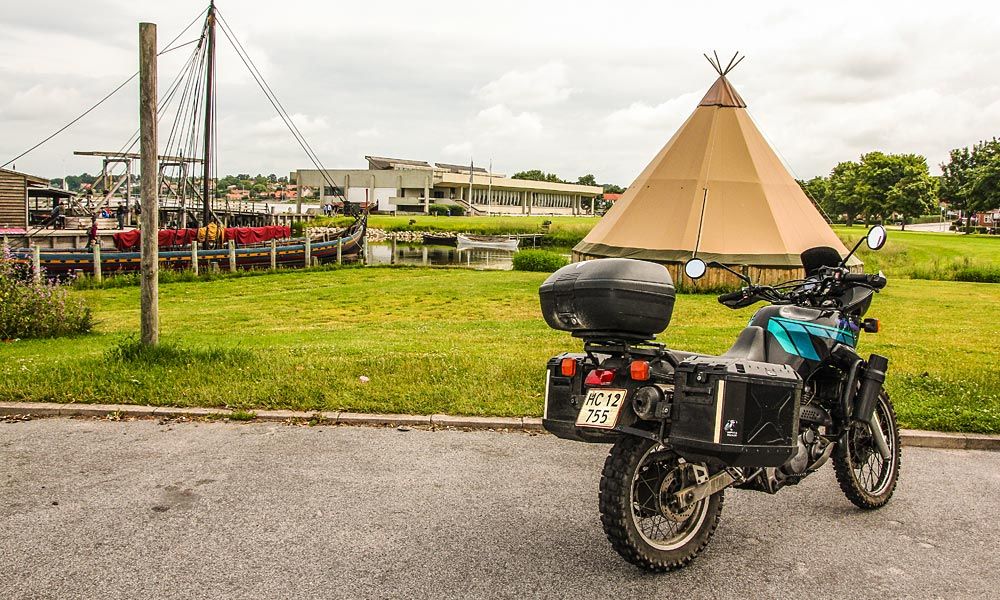ETR // Stage 19 // Värnamo - Karlskrona
-
57°11'01.0"N 14°02'52.8"E
-
57.183604, 14.048001
-
Värnamo - Karlskrona
Distance
-
Värnamo - Karlskrona
-
Radius 100 km
-
192 km
Highlights
-
Kronoberg Castle, Växjö
-
Smaland’s Museum
-
Swedish Glass Museum
-
House of Emigrants
-
The island of Öland
-
Kalmar Cathedral
-
Karlskrona Main Square
-
Fredrikskyrkan
-
Trefaldighetskyrkan
-
Femfingerdockan
-
Blekinge Museum
-
Marine Museum
-
Karlskrona Kunsthal
-
Stumholmen
-
Hasslö, Tjurkö, Sturkö


The Vikings of Växjö
Kronoberg Castle is a medieval ruined castle located on an island in Helgasjön, 5 kilometres north of Växjö in Kronoberg County, which is named after the castle. The castle ruin is open to tourists in the summer months and definitely worth a visit.
Smaland’s Museum and Swedish Glass Museum
Founded in 1867, Smaland’s Museum is Swedens oldest county museum, and displays a wide range of objects including Stone Age relics and a Viking-era sword. In the same complex, the Swedish Glass Museum showcases a vast collection of works spanning ancient times to the present day.
You can lose yourself in these museums and allow yourself to be enchanted by the oldest Swedish glass, dating back to the 1580s, royal cups and simple bottles from the 17th and 18th centuries, as well as world famous design from the 20th century and contemporary Swedish glass, some of which you will recognise.
Next door, the House of Emigrants is a museum documenting the mass migration of Swedes to the U.S. that began in the mid-1800s. Småland’s Museum has frequent temporary exhibitions presenting Kronoberg’s cultural history in the past, present and future, and permanent exhibitions display objects from the 19th and 20th centuries.



The Kalmar Union and the island of Öland
Situated on the Baltic Sea, the area around Kalmar has been inhabited since ancient times. Excavations have found traces of Stone Age burial sites with the oldest evidence of newer settlements dating from the 11th century. The oldest city seal of Kalmar is from somewhere between 1255 and 1267, making it the oldest known city seal in Scandinavia. According to a medieval folk tale, the Norwegian king Saint Olav moved his ships to Kalmar.
The third largest urban area in the province and cultural region of Småland, Kalmar lies just beside the main route to the island of Öland, and you can get a good overview while crossing the Öland Bridge. Kalmar Cathedral was designed by Nicodemus Tessin the Elder and is one of the foremost examples of baroque classicism in Sweden.
Queen Margaret called an assembly in Kalmar between the heads of state of Sweden and Norway, and on 13 July 1397, the Kalmar Union treaty was signed, which would last until 1523. Kalmar's strategic location, near the Danish border - at the time the Scanian lands included the provinces of Blekinge, Halland and Scania, and were part of Denmark. From the thirteenth to the seventeenth centuries, Kalmar was one of Sweden's most important cities. It became a fortified city, with the Kalmar Castle as the center. After the Treaty of Roskilde in 1658, Kalmar's importance diminished until developments in the industry sector revitalised it in the 19th century.



The fires of Karlskrona
Yet another Swedish city that has been ravaged by fire somewhere in its history, Karlskrona suffered a major fire in 1790, where 145 houses burned down. These days, you can still experience exciting buildings from the 17th century Baroque period and the 18th century neoclassicism, or classic narcissism, whichever way you want to look at it :)
The Five Finger Dock
You should also check out Femfingerdockan. Built between 1758 and 1856, Femfingerdockan is a testimony to the technical development that took place in Karlskrona's shipyard for many years and in specifics of the innovative technology for blasting under water by engineer Daniel Thunberg came to Karlskrona. In 1759, one of his most important assignments there was to construct the dry docks, and today, Femfingerdockan is still used by SAAB Kockums AB for its maritime operations.

Karlskrona's Neoclassical main square
Created with military parades in mind, Stortorget is one of Europe's largest squares. It is located on the highest point of the Trossö and is framed by monumental buildings from more than 300 years.
At Stortorget you can find the two Baroque-style churches Fredrikskyrkan with its twin towers, and Trefaldighetskyrkan - also called Tyska Kyrkan, as well as the neoclassical town hall from 1795. Fredrikskyrkan is strongly inspired by the Trinita dei Monti church on the Spanish Steps in Rome. South of Stortorget you can find Sweden's oldest wooden church, the Admiralty Church Ulrica Pia, from 1685.
Karlskrona's Historical museums
Karlskrona has two large museums, both of which are worth a visit. Blekinge Museum on Fisktorget (on Trossö), which is the county museum for the whole of Blekinge and the Marine Museum on Stumholmen, which tells about the history of the fleet. At Stumholmen you will also find Karlskrona Kunsthal (Borgmästaregatan 17). Stumholmen is a military area with many exciting buildings, bastions, hangars, and other interesting constructions and structures.



Venture out into the archipelago
You can take a boat trip out into the archipelago from Fisktorget on Trossö in the center of Karlskrona, or just ride out to the islands of Hasslö, Tjurkö, Sturkö and Senoren which have a landbridge connection.
Another option is to take the car out to the larger archipelago lakes: The car ferry to Aspö is free. On the right side of Trossö is Handelshamnen with boats to Tjurkö, Sturkö, Aspö and Hasslö.
Tjurkö was the center of the stonemasonry industry in the mid-19th century. At Herrgårdsviken there is a 1.5 km marked hiking trail, which passes several of the old facilities from the stone industry.
In October 1981, the Russian submarine U137 ran aground at Torrumskär east of Sturkö, and within a few days the Karlskrona Archipelago was suddenly and reluctantly infamous around the world.





































































































